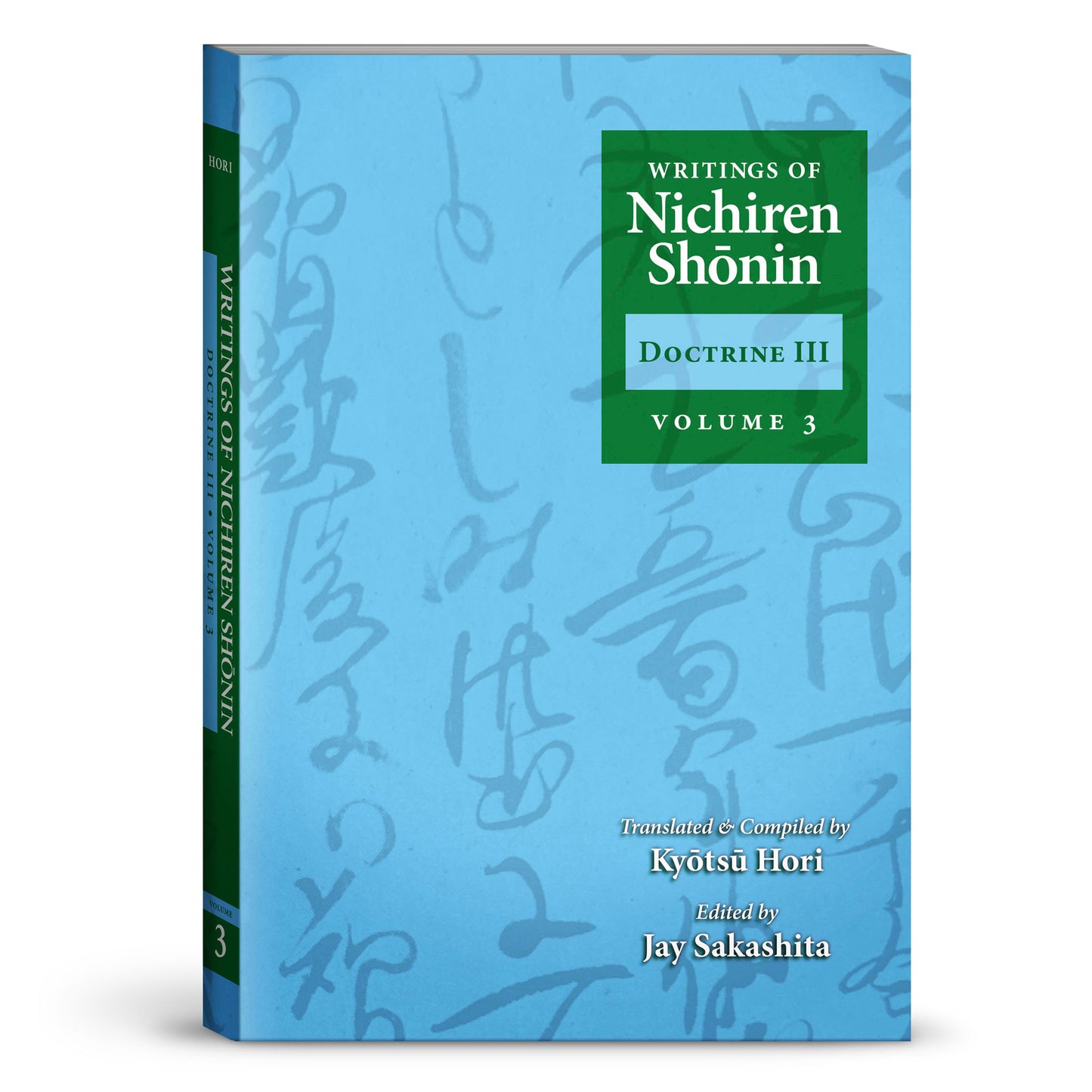NBIC
Writings of Nichiren Shonin Volume 3 (2nd Edition)
Writings of Nichiren Shonin Volume 3 (2nd Edition)
Couldn't load pickup availability
The new 2nd edition of Writings of Nichiren Shonin Volume 3 with corrections for easier reading and a complete new glossary. Available on Amazon.
This volume, the 11th project of the English Translation Committee of the Nichiren Shu Overseas Propagation Promotion Association (NOPPA), constitutes all 23 writings of Buddhist reformer Nichiren Shōnin (1222-1282) included in the Nichiren Shonin Zenshu, Complete Writings of Nichiren Shonin, Volume 3: Theology 3, published in Tokyo in 1994.
The Nichiren Shonin Zenshu is a modern Japanese version of Nichiren's original writings, translated and edited with annotations by modern scholars of Nichiren Buddhism. Despite its all-inclusive title, the Zenshu is highly selective in that it takes into account only writings considered bibliographically authentic: attested to by original manuscripts. Among such texts, those included in the Showa Teihon Nichiren Shonin Ibun, Writings of Nichiren Shonin Standardized in the Showa Period, complied by the Rissho Daigaku Nichiren Kyogaku Kenkyu-jo, Center for the Study of Nichiren Buddhism, published by Minobusan Kuonji Temple between 1951 and 1959, are considered the most authoritative, and they provide the basic texts for this volume.
The Essay on Gratitude, Hōon-jō, the last of Nichiren's five major writings, is included in this volume. It was written from Nichiren's hermitage on Mount Minobu in 1276, in the month after receiving news of the death of his master, Dozen-bo. Unable to leave his hermitage, he sent his disciple Nikō to read the essay at his late master's tomb and before the other monks at Seichōji temple.
This volume also includes what is sometimes called Nichiren's "sixth major writing": A Letter to Lay Priest Soya, Soya Nyūdō-dono-gari Gosho. This expands on another writing contained in this volume,Treatise on the Teaching, Capacity, Time and Country, Kyōki Jikoku-shō, in which Nichiren lays out the five principles for propagation. It also describes the Lotus Sutra as precious medicine for saving the people living in the Latter Age of Degeneration.
One of the more colorful works in this volume is A Clarification of Slandering the True Dharma, Ken Hōbō-shō, in which Nichiren describes the conditions of the eight major hells and what people do to find themselves in these horrifying places. Then after describing how the worst of these hells is the destination for those who commit the worst transgression of slandering the Lotus Sutra, he argues that there is only one way to Buddhahood. In other words, forms of Buddhism other than the practice of the Wonderful Dharma of the Lotus Sutra, not to mention non-Buddhist practices, will only leave people trapped in cycles of suffering.
This ties in with the overviews he provides in Outline of All the Holy Teachings of the Buddha, Ichidai Shōgyō Tai-i, Questions and Answers on Other Schools, Shoshū Mondō-shō, and Genealogical Chart of the Buddha's Lifetime Teachings in Five Periods, Ichidai Koji Keizu. Following T'ien-t'ai's assertion that it is necessary to comprehend the superior position of the Lotus Sutra relative to the Buddha's other teachings, Nichiren gives an overview of those other teachings with details of how they fall short of the Wonderful Dharma of the Lotus Sutra that leads all beings to the Buddha's wisdom.
Share

